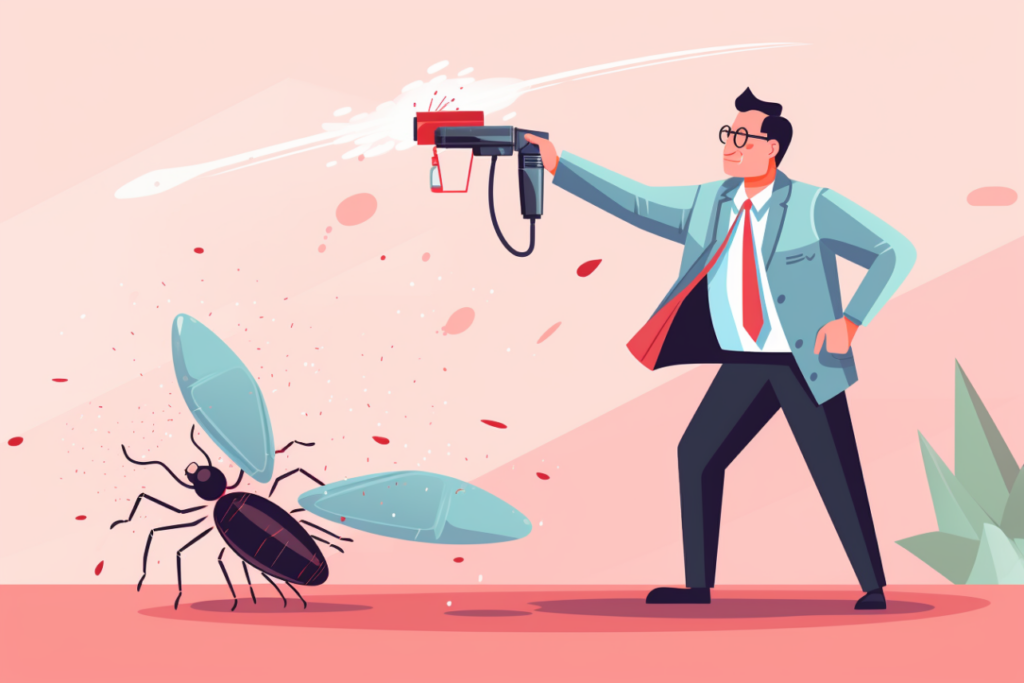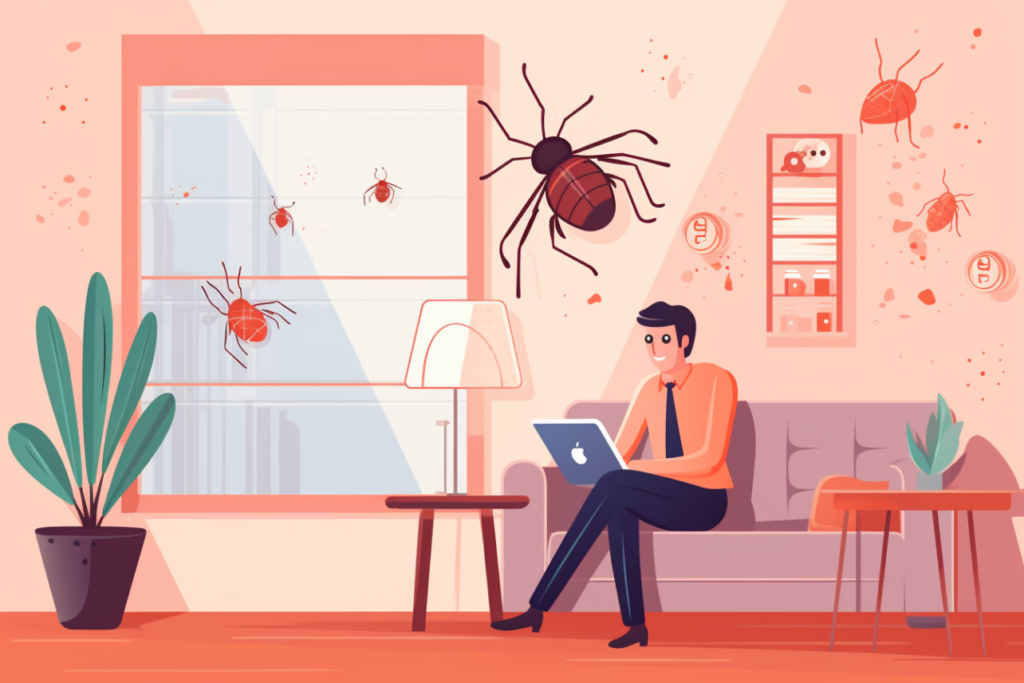Are you dealing with those minuscule insects that can wreak havoc on your home and your beloved pets? If you’ve ever dealt with a flea infestation, you know how challenging it can be to get rid of these persistent little creatures. While numerous methods are available to combat flea problems, one option that people often turn to is a flea bomb. But what exactly is a flea bomb, and how does it work?
In this blog post, we will explore the ins and outs of flea bombs, their effectiveness, and potential risks.
What Causes Fleas?
Before getting into how to get rid of pesky fleas, it is important to understand the root cause of a flea infestation in your home. Several factors can contribute to the presence of fleas:
Pets
One of the most common ways fleas enter homes is through pets, such as dogs and cats. Fleas can latch onto pets when they are outdoors and then infest homes, laying eggs in carpets, bedding, and upholstery.
Wildlife
In addition to pets, fleas can also be carried by wildlife, such as rodents (rats and mice) and birds. If your home has openings or access points that allow wildlife to enter, fleas can be introduced this way.
Human Transport
While less common, fleas can also hitch a ride on humans, particularly in areas with high flea populations, such as infested homes or outdoor environments.
Vacant Homes
Fleas can thrive in vacant homes, especially if the previous occupants had pets that left behind flea eggs. New residents can inadvertently stir up fleas when they move in or visit.
Outdoor Areas
Fleas can inhabit outdoor areas, such as lawns, gardens, and areas with tall grass. Pets that spend time outdoors can pick up fleas in these environments.
Neighboring Infestations
If your neighbors have flea infestations, there’s a possibility that fleas can migrate to your home through shared walls, vents, or other entry points.
Climate
Fleas thrive in warm and humid conditions, so they are more common in certain regions and during specific seasons. However, they can survive in various climates.
What is a Flea Bomb?

A flea bomb sometimes called a flea fogger or flea insecticide aerosol, is a device designed to release a powerful insecticidal fog in a closed space to eliminate fleas and other pests. These foggers contain chemicals such as pyrethrin or pyrethroids, which are insecticides derived from chrysanthemum flowers.
How Does It Work?
The concept behind a flea bomb is fairly straightforward. When you activate the device, it releases a mist of fog that fills the room, penetrating all the nooks and crannies where fleas may be hiding. The fog contains the insecticide, which comes into contact with the fleas and disrupts their nervous system, ultimately leading to their demise.
Effectiveness
Now, let’s discuss the effectiveness of flea bombs. When used correctly and combined with other preventative measures, flea bombs can efficiently control and eliminate flea infestations. They are particularly useful when fleas have spread to different areas of your home, making it challenging to treat each room separately.
Pros & Cons of Flea Bombs
Like any pest control method, flea bombs have their pros and cons.
Pros of Flea Bombs:
- Convenience: Flea bombs are relatively easy to use and require minimal effort. You simply activate the bomb, leave the area, and let it work.
- Coverage: Flea bombs can treat a large area, including multiple rooms, providing comprehensive coverage for a flea infestation.
- Kills Fleas and Other Pests: In addition to fleas, many flea bomb products are designed to target and kill other common household pests like cockroaches, ants, and spiders.
- Accessibility: Flea bombs are available at most home improvement stores, supermarkets, and online retailers.
Cons of Flea Bombs:
- Health Risks: Flea bombs contain chemicals that can harm humans and pets if misused. They can irritate the eyes, skin, and respiratory system. It’s essential to follow safety precautions, including vacating the treated area, covering food, and removing pets and people, especially children and individuals with respiratory conditions, during application.
- Limited Residual Effect: Flea bombs may kill adult fleas and some larvae but may not eliminate all life stages, including pupae. This means that a follow-up treatment is often necessary to address newly hatched fleas.
- Temporary Solution: Flea bombs are short-term and may not provide long-lasting protection against future flea infestations. Regular pet flea prevention and home maintenance are essential for preventing reinfestations.
- Residue: Flea bomb residues may be left on surfaces, which can be a concern if you have young children or pets that come into contact with treated areas. Thoroughly clean and ventilate the treated space after using a flea bomb.
When using flea bombs, reading and following the product’s instructions carefully, including safety guidelines, is crucial. If you have concerns about using chemical pesticides in your home, consider consulting with a pest control professional who can offer alternative, pet-safe, and eco-friendly flea control options tailored to your specific situation.
To ensure your safety, it is recommended to vacate the premises during the fogging process and for a specified period afterward, as indicated on the flea bomb packaging. Cover or remove any exposed food, utensils, and pet items to prevent potential contamination. Once the treatment is completed, be sure to open windows, turn on fans, and thoroughly ventilate the treated area before reoccupying it.
Identifying Fleas
Identifying fleas can be essential for effective pest control. Here are some common signs and characteristics that can help you identify fleas:
Bites on Humans or Pets: One of the most noticeable signs of a flea infestation is the presence of itchy, red, or raised bite marks on humans or pets. Flea bites often appear in lower legs, ankles, and feet clusters.
Pet Scratching: If your pets are constantly scratching, biting, or licking themselves, it could be a sign of fleas. Check their fur, especially in areas with thin hair, for signs of fleas or flea dirt (feces), which looks like tiny black specks. Signs of flea allergies in pets include hair loss, inflamed skin, and hot spots.
Flea Dirt: Flea dirt is a common sign of fleas. It looks like black specks or tiny granules and can often be found in the fur of infested pets or their bedding. You can distinguish flea dirt from regular dirt by placing it on a damp paper towel; if it turns red, it’s likely flea dirt, as it contains digested blood.
Adult Fleas: Adult fleas are small, reddish-brown insects with flattened bodies about 1 to 2 mm long. They have six legs and are excellent jumpers, capable of jumping several inches high.
Flea Larvae: Flea larvae are worm-like, whitish in color, and about 2-5 mm long. They avoid light and are usually found in dark, hidden places like carpets, pet bedding, and baseboards.
Taking immediate action to control the problem is crucial if you suspect a flea infestation.
In conclusion, flea bombs can effectively combat flea infestations, especially when used in conjunction with other preventive measures. By understanding what flea bombs are, how they work, and being aware of potential risks, you can make a better-informed decision on whether to use them or opt for alternative methods.
Remember to follow the instructions carefully, prioritize safety, and consult with professionals if you have any concerns or specific circumstances. Finally, with a comprehensive approach and a little persistence, you can bid farewell to those troublesome fleas and restore peace and comfort to your home.
You might also be interested in: How To Identify Bed Bugs [And Get Rid Of Them]




